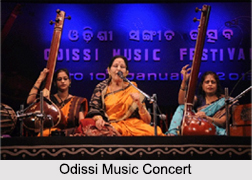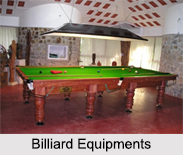 Kuchipudi dance, originally called Kuchelapuri or Kuchelapuram, is a classical dance form. From South Indian state of Andhra Pradesh it grew largely as a product of Bhakti (devotion) movement beginning in the seventh century A.D. It derives its name from the village of Kuchelapuram in Krishna district, which is a small village about 65 km from Vijayawada. Kuchipudi dance is known for its graceful movements and its strong narrative or dramatic character. The tradition of Kuchipudi dance was passed down through generations of Brahmin families in Kuchipudi village and interacted with the temple dance traditions as well as the other drama traditions of South India.
Kuchipudi dance, originally called Kuchelapuri or Kuchelapuram, is a classical dance form. From South Indian state of Andhra Pradesh it grew largely as a product of Bhakti (devotion) movement beginning in the seventh century A.D. It derives its name from the village of Kuchelapuram in Krishna district, which is a small village about 65 km from Vijayawada. Kuchipudi dance is known for its graceful movements and its strong narrative or dramatic character. The tradition of Kuchipudi dance was passed down through generations of Brahmin families in Kuchipudi village and interacted with the temple dance traditions as well as the other drama traditions of South India.Origin of Kuchipudi Dance
Kuchipudi dance, like other classical dance forms in India, traces its roots to the Sanskrit Natya Shastra, a foundational treatise on the performing arts. Its first complete compilation is dated to between 200 BCE and 200 CE; but the estimates vary between 500 BCE and 500 CE. The most studied version of the Natya Shastra text consists of about 6000 verses structured into 36 chapters.
During earlier days Kuchipudi dance was performed once in a year and the dance form was cautiously kept out of the reach of Devadasis. From the fist performers, the technique and skills of this form got handed over to the next generations to acquire the present form. The tradition has remained so unbroken that even today in some of the coastal areas of Andhra pradesh, Kuchipudi dance is still performed by all-male troupes.
However, in modern times, women have dominated the art. Modern Kuchipudi dance acquired its present form in the 20th century. A number of people were responsible for moving it from the villages to the performance stage. Prior to this time, even as early as the 8th century, prototypes of the Kuchipudi dance drama centering on the life of Lord Shiva and other Hindu gods had been performed and was known as Nattuva Mala. Originally it was meant to be a ritualistic performance full of religious passion and devotion. Properly trained men and boys presented the dance in the open air on an improvised stage. The play began by paying respect to Lord Ganesha. In the past 30 years, the dance has undergone a revival as both a solo and dance drama tradition and is now performed on the modern stage around the world by both men and women.
Style and Technique of Kuchipudi Dance
Kuchipudi dance styles are based on Abhinaya Darpana and Bharatarnava of Nandikeshwara, which are then sub-divided into Nattuva Mala and Natya Mala. Nattuva Mala is of two types- the Puja dance performed on the Balipitha in the temple and the Kalika dance performed in a Kalyana Mandapam. Natya Mala is of three kinds-ritual dance for gods, Kalika dance for intellectuals and Bhagavatam for common place.
 Costumes and Jewellery of Kuchipudi Dancers
Costumes and Jewellery of Kuchipudi DancersKuchipudi dance has now gained immense popularity because of its lilting music and graceful and flowing movements and vibrant stage presentation. Costumes of Kuchipudi dance look similar to Bharatnatyam costumes. The important characters have different make up and the female characters wear ornaments and jewellery such as Rakudi (head ornament), Chandra Vanki (arm ornament), Adda Bhasa and Kasina Sara (neck ornament) and a long plait decorated with flowers and jewellery. Ornaments worn by the artists are generally made of a lightweight wood called Boorugu.
For more, visit the link below:







